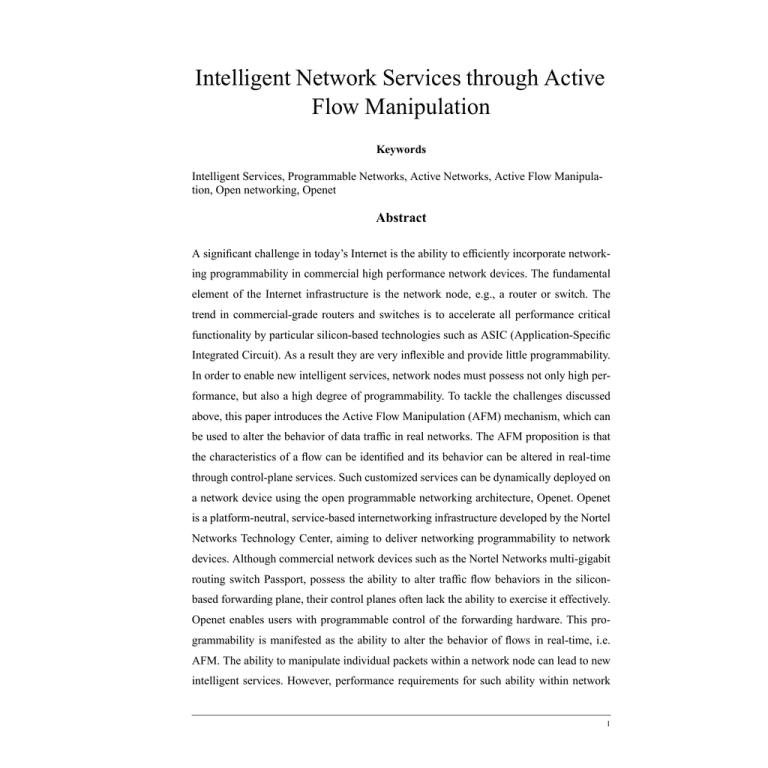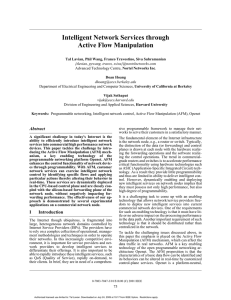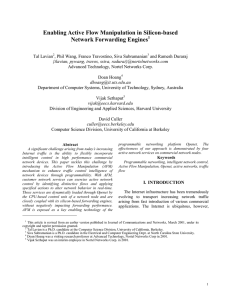Intelligent Network Services through Active Flow Manipulation
advertisement

Intelligent Network Services through Active Flow Manipulation Keywords Intelligent Services, Programmable Networks, Active Networks, Active Flow Manipulation, Open networking, Openet Abstract A significant challenge in today’s Internet is the ability to efficiently incorporate networking programmability in commercial high performance network devices. The fundamental element of the Internet infrastructure is the network node, e.g., a router or switch. The trend in commercial-grade routers and switches is to accelerate all performance critical functionality by particular silicon-based technologies such as ASIC (Application-Specific Integrated Circuit). As a result they are very inflexible and provide little programmability. In order to enable new intelligent services, network nodes must possess not only high performance, but also a high degree of programmability. To tackle the challenges discussed above, this paper introduces the Active Flow Manipulation (AFM) mechanism, which can be used to alter the behavior of data traffic in real networks. The AFM proposition is that the characteristics of a flow can be identified and its behavior can be altered in real-time through control-plane services. Such customized services can be dynamically deployed on a network device using the open programmable networking architecture, Openet. Openet is a platform-neutral, service-based internetworking infrastructure developed by the Nortel Networks Technology Center, aiming to deliver networking programmability to network devices. Although commercial network devices such as the Nortel Networks multi-gigabit routing switch Passport, possess the ability to alter traffic flow behaviors in the siliconbased forwarding plane, their control planes often lack the ability to exercise it effectively. Openet enables users with programmable control of the forwarding hardware. This programmability is manifested as the ability to alter the behavior of flows in real-time, i.e. AFM. The ability to manipulate individual packets within a network node can lead to new intelligent services. However, performance requirements for such ability within network 1 nodes can be extremely high. The technology required to operate on every single packet within a network node at high line rates e.g. OC-192 is beyond the reach of existing products. Therefore, we shift our emphasis to providing intelligent services through manipulation of flows. Operations that can be used to manipulate flows within a network device are explored. Such operations are used to create new services that can be dynamically deployed on network nodes without negatively impacting forwarding performance. The effectiveness of our approach is demonstrated by several applications on a commercial high performance network node. Author Information Primary: Tal Lavian, Nortel Networks Inc. Secondary: Phil Wang, Franco Travostino, Siva Subramanian, Robert Duncan - Nortel Networks Inc. Doan Hoang, David Culler - University of California at Berkeley Vijak Sethaput - Harvard University Primary Contact Information: Address: Nortel Networks, 2305 Mission College Blvd., Mailstop SC2-3, Santa Clara, CA - 95054 - USA Fax: (408) 988 7512 Phone: (408) 495 3062 Email: tlavian@nortelnetworks.com 2








